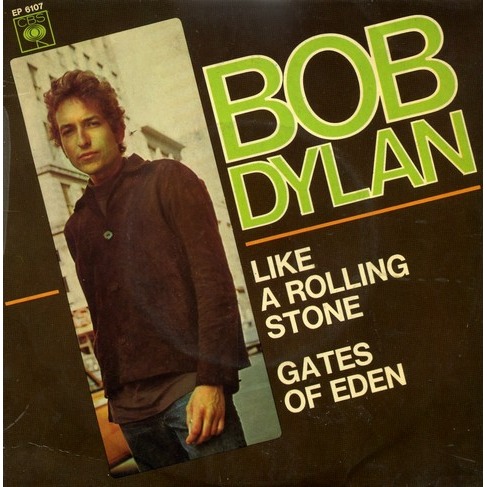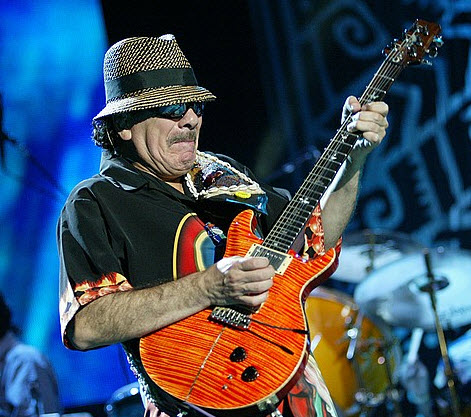
“This is about growing up, this is about discovering what is going on around you, realizing that life isn’t all you’ve been told. So now you’re without a home, you’re on your own, complete unknown, like a rolling stone. That’s a liberating thing. This is a song about liberation.”
— Jann Wenner, Rolling Stone magazine (Greil Marcus – Like A Rolling Stone: Bob Dylan at the Crossroads (book))“The first time I heard Bob Dylan, I was in the car with my mother listening to WMCA, and on came that snare shot that sounded like somebody had kicked open the door to your mind” – Bruce Springsteen (Jan 1988)
“When I heard Like a Rolling Stone, I wanted to quit the music business because I felt: ‘If this wins and it does what it’s supposed to do, I don’t need to do anything else.'”
– Frank Zappa (1965 )
The first time I really listened to “Like A Rolling Stone”, I felt I entered a parallel universe.. a place of intense beauty.. a place filled with this wonderful blues-fueled rock music… and a spellbinding ..organ! I had never heard anything like it.. anything this good..
That was the day I understood that there is bad music, good music, great music & then there is Bob Dylan. He plays in another league. His musical universe is still as beautiful now as it was first time I flew into it.. “Like A Rolling Stone” still sounds as fresh as it did the first time I listened ~25 years ago. (Egil, Johannasvisions)
Like A Rolling Stone:
Everything is changed now from before. Last spring I guess I was going to quit singing. I was very drained and the way things were going it was a very draggy situation – I mean, when you do Everybody Loves You For Your Black Eye and meanwhile the back of your head is caving in. Anyway, I was playing a lot of songs I didn’t want to play. I was singing words I didn’t really want to sing. I don’t mean words like “God” and “mother” and “president” and “suicide” and “meat cleaver”. I mean simple little words like “if” and “hope” and “you”.
But Like A Rolling Stone changed it all; I didn’t care any more after that about writing books or poems or whatever. I mean it was something that I myself could dig.
It’s very tiring having other people tell you how much they dig you if you yourself don’t dig you. It’s also very deadly entertainment-wise. Contrary to what some scary people think, I don’t play with a band now for any kind of propaganda-type or commercial-type reasons. It’s just that my songs are pictures and the band makes the sound of the pictures.
-Bob Dylan (to Nat Hentoff – March 1966)
Like A Rolling Stones (Live at London’s Albert Hall, May, 1966):
“Like A Rolling Stone” was recorded @ the second “Highway 61 Revisited” recording sessions on June 16 – 1965, produced by Tom Wilson.
“The voice is infinitely nuanced — at times almost an authoritarian monotone (not unlike Ginsberg reading “Howl”), at times compassionate, tragic (the voice of Jacques-Louis David in his painting of Marat) — but also angry, vengeful, gleeful, ironic, weary, spectral, haranguing.
And it would sound this way in ancient Greek or contemporary Russian. There is so much desire and so much power in this voice, translated into a sensitivity that enables it to detect tiny vibrations…”
— Michael Pisaro (composer)
“Like a Rolling Stone” is a 1965 song by the American singer-songwriter Bob Dylan. Its confrontational lyrics originate in an extended piece of verse Dylan wrote in June 1965, when he returned exhausted from a grueling tour of England. After the lyrics were heavily edited, “Like a Rolling Stone” was recorded a few weeks later as part of the sessions for the forthcoming album Highway 61 Revisited.
During a difficult two-day pre-production, Dylan struggled to find the essence of the song, which was demoed without success in 3/4 time. A breakthrough was made when it was tried in a rock music format, and rookie session musician Al Kooper improvised the organ riff for which the track is known.
However, Columbia Records was unhappy with both the song’s length at over six minutes and its heavy electric sound, and was hesitant to release it. It was only when a month later a copy was leaked to a new popular music club and heard by influential DJs that the song was put out as a single. Although radio stations were reluctant to play such a long track, “Like a Rolling Stone” reached number two in the US charts and became a worldwide hit. (Wikipedia)
In 2004 Rolling Stone magazine placed the song at number one on its list of “The 500 Greatest Songs of All Time”

Like A Rolling Stone, Manchester 1966:
Other 20 July:
Carlos Augusto Alves Santana (born July 20, 1947) is a Mexican and American rock guitarist. Santana became famous in the late 1960s and early 1970s with his band, Santana, which pioneered rock, Latin music and jazz fusion. The band’s sound featured his melodic, blues-based guitar lines set against Latin and African rhythms featuring percussion instruments such as timbales and congas not generally heard in rock music.
Santana continued to work in these forms over the following decades. He experienced a resurgence of popularity and critical acclaim in the late 1990s. In 2003, Rolling Stone magazine listed Santana at number 15 on their list of the 100 Greatest Guitarists of All Time.
He has won 10 Grammy Awards and 3 Latin Grammy Awards.
Allmusic (William Ruhlmann) on Santana (the band):
Santana is the primary exponent of Latin-tinged rock, particularly due to its combination of Latin percussion (congas, timbales, etc.) with bandleader Carlos Santana’s distinctive, high-pitched lead guitar playing. The group was the last major act to emerge from the psychedelic San Francisco music scene of the 1960s and it enjoyed massive success at the end of the decade and into the early ’70s. The musical direction then changed to a more contemplative and jazzy style as the band’s early personnel gradually departed, leaving the name in the hands of Carlos Santana, who guided the group to consistent commercial success over the next quarter-century. By the mid-’90s,Santana seemed spent as a commercial force on records, though the group continued to attract audiences for its concerts worldwide. But the band made a surprising and monumental comeback in 1999 with Supernatural, an album featuring many guest stars that became Santana’s best-selling release and won a raft of Grammy Awards.
Black Magic Woman – Live 1971:
Chris Cornell (born Christopher John Boyle; July 20, 1964) is an American rock musician best known as the lead vocalist and rhythm guitarist for Soundgarden and as the former lead vocalist for Audioslave. He is also known for his numerous solo works and soundtrack contributions since 1991. He is known for his wide vocal range, spanning B1-G5 in full-voice, and up to E6 in falsetto, as well as his powerful vocal belting technique.
He is also known for his numerous solo works and soundtrack contributions since 1991. He is known for his wide vocal range, spanning B1-G5 in full-voice, and up to E6 in falsetto, as well as his powerful vocal belting technique.
He was the founder and frontman for Temple of the Dog, the one-off tribute band dedicated to his former roommate, Andrew Wood.
He has released three solo studio albums, Euphoria Morning (1999), Carry On (2007), and Scream (2009).Cornell was ranked 4th in the list of “Heavy Metal’s All-Time Top 100 Vocalists” by Hit Parader.
Stone Carpenter Gossard (born July 20, 1966) is an American musician who serves as the rhythm and lead guitarist for the American rock band Pearl Jam. Along with Jeff Ament, Mike McCready, and Eddie Vedder, he is one of the founding members of Pearl Jam.
Gossard is also known for his work prior to Pearl Jam with the 1980s Seattle, Washington-based grunge rock bands Green River and Mother Love Bone, and he has made contributions to the music industry as a producer and owner of a record label and a recording studio. Gossard has also been a member of the side project band Brad. In 2001, Gossard released his first solo album, Bayleaf.
– Hallgeir
Sources: Wikipedia, Rolling Stone Magazine, Greil Marcus – Like A Rolling Stone: Bob Dylan at the Crossroads (book), Allmusic



I was twelve in 1965. I, like Bruce, was listening to WMCA on the little transistor radio (complete with earplug) back then. Nothing like this song was played on the radio before.
Bruce calls it the “snare shot that sounded like somebody had kicked open the door to your mind” and I like to call it the “snare shot that shattered our perception of reality and changed our world forever.”
Nothing like this song has been written since, in my opinion.
Thanks for your story!
There are so many good songs and this is one of Dylan’s best. Actually it is one of the best period.
– Hallgeir
July 1965. I was 13 years old. Like A Rolling Stone comes through my transistor radio and changed everything forever. I didn’t quite understand what this guy Dylan was saying but I knew he was speaking to me. I’ve been hanging on every word ever since.
Great story, I was introduced to Dylan much later but I can really relate to what you are telling us.
thanks for the feedback!
– Hallgeir